Inside Trans Pioneer Marlene Parker’s Journey From Nazi Germany to Hollywood – and Beyond
When I say hello to Marlene Parker, my neighbor of more than 20 years, I usually say, “Good to see you,” and she’ll reply with a smile and a laugh, “It’s good to be seen.”
She has lived on the same corner in West Hollywood for more than 40 years, even before the LGBTQ-friendly Los Angeles enclave officially became its own city. She’s hard to miss, with a boisterous energy that belies her 92 years and an insistence on dressing to the nines — jewelry, makeup, and fabulous hair, of course — even if it’s to walk the dog or go to the store. If she comes to a city meeting, she arrives fashionably late enough to make a grand entrance, apologizing in her distinctly throaty, German-accented voice.
Even if you know Marlene, you don’t know her whole story, which she was never willing to tell publicly. She’s turned down documentarians and a play about her life in Berlin, but after so many years out of the limelight, Marlene is finally ready to be seen. Forty-five years after she transitioned, she told me, “I guess it’s time I let my hair down.”

And what a story it is. She survived the bombing of Dresden, fled Berlin to freedom with her boyfriend before the wall went up, and found her way to Hollywood, where one of her lovers was the most famous closeted gay star on the planet, Rock Hudson.
“I’ve had a busy life,” she smiled as she recounted such movie-worthy moments. The duplex she has lived in since the 1980s isn’t as grand as the Hollywood Hills house she lived in in the ’60s and ’70s, but every inch is richly decorated. She painted the warm gold walls herself, and the apartment is packed with biographies and photos of glamorous screen idols Marilyn Monroe, Marlene Dietrich and Sophia Loren. Her secluded garden has a water fountain, plants that she lovingly tends, Egyptian and Greek-inspired statues and a stone Buddha who might be wearing a wig or a cowrie shell necklace, depending on the occasion.
When I stopped by a few days before Christmas, she’d already decorated, putting up bells, an angel and a nutcracker, and tiny-disco-ball-decked poinsettias from nearby Hargitay Plants, which belonged to the late Mickey Hargitay. The bodybuilder — and father of “SVU” lead Mariska Hargitay — was a close friend, along with movie star wife Jayne Mansfield.
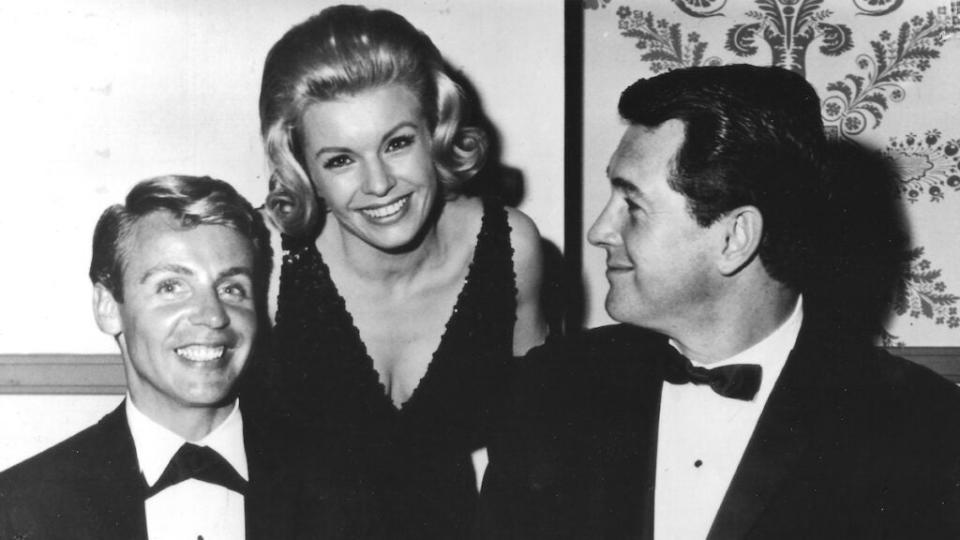
In her living room hangs an oil portrait painted of her when she was a young, handsome actor known as John Siegfried. Marlene doesn’t mind using her “dead” name, explaining “there’s something still left,” about her previous life as John. She also wondered if we shouldn’t change her pre-transition pronouns to “he” in this article.
Her drawers are full of clippings from her Hollywood career, and photos of her pre-transition with stars like Gene Kelly and Julie Andrews. Walking into her dining room is like walking into the nearby Formosa Cafe: She has signed photos of friends including Eartha Kitt, Shelley Winters, Robert Forster and Siegfried and Roy, who all knew and loved her as Marlene.
Born as the handsome, blond Siegfried Speck in Dresden in 1930, she grew up in an orphanage as her mother, who was deaf and mute, couldn’t raise her on her own. At age six, she was adopted by foster parents, but it was only a marginal improvement. “They were very strict and there was no hugging or anything like that,” she told me, showing me old photographs of her as a child in a crib. “Some people just don’t do that, you know? And I was hungry for it. So anybody I see now, I hug.”
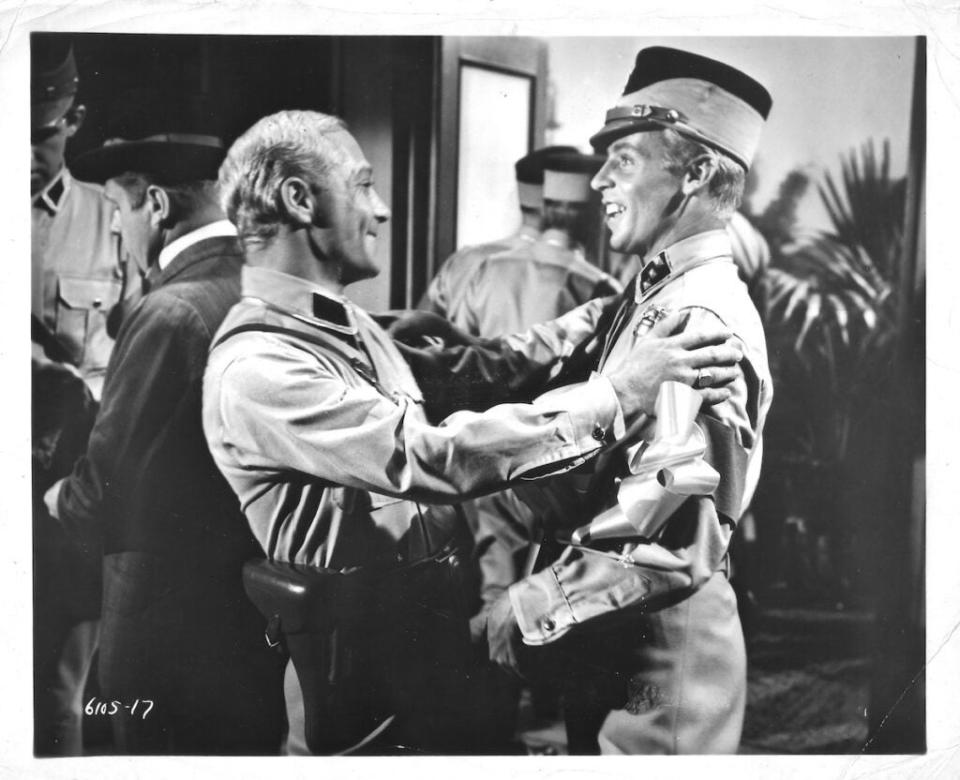
In another photo, taken when she was about 10, she’s the only child smiling with a group of other uniformed boys in the Deutsches Jungvolk, the mandatory Nazi youth group for 10-to-13-year-old boys. “Of course, we knew Hitler, we had to learn how to march and, and big, big stuff. But you were still a child.” At age 14, one year before the war ended, she joined the ranks of the also mandatory Hitler Youth. “Then they can also use you in the war,” she recalled. “In Dresden, when we heard the Russians already bombing, they used us to try to keep them out. It was stupid. They were [already] in Germany.”
A few months after her 14th birthday, Allied Forces repeatedly bombed Dresden, killing more than 20,000 people and reducing the city to rubble. She lived just outside the city limits with her adoptive parents. She remembered, “You’re trying to get some cover in the cellar, and then you ran out of the cellar, because even the cellar wasn’t safe. And you run out and get to a ditch or a river and the bombs were [still] coming down. You just never forget. So this was my childhood.”
She is still bitter about what happened in the post-war era under Russia, recalling rapes and other brutalities. “You think the war was over for us in East Germany? No, it wasn’t.”
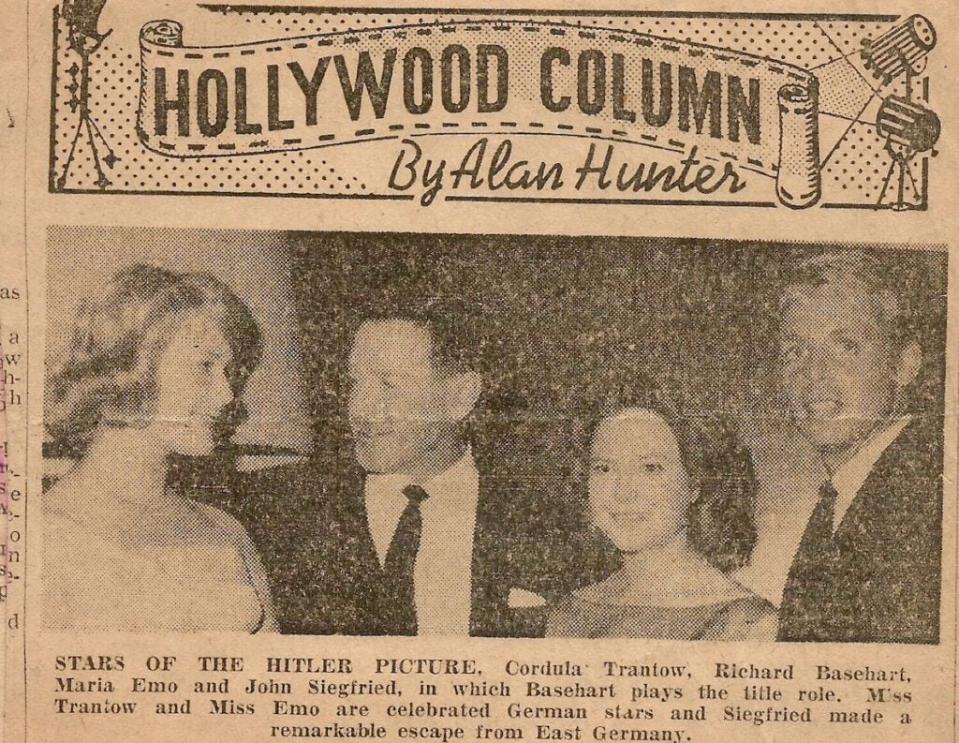
Parker’s escape from East Germany is noted in the caption (Newspaper clipping courtesy of Marlene Parker)
In the mid-1940s, Marlene apprenticed as a hairdresser and, a few years later, left for East Berlin, where she landed a job at a fashionable salon on Friedrichstrasse. The Berlin Wall wasn’t up yet (that would happen in 1961) and travel to the West was allowed, but closely monitored. She remembered, “There were Secret Police everywhere. They were like the Gestapo.”
Marlene keeps a framed photo of Felix, a serious-looking man with dark wavy hair who resembles a more attractive John Garfield, on a table in her living room. He’s the boyfriend with whom she escaped from East Germany and who she called “the love of my life… We met in West Berlin at a big party at a gay club. It was love at first sight,” she said. “Not even Rock Hudson could top him.”
Eventually, the pair decided to make the treacherous and illegal journey to the West. “It was very dangerous. Many people got killed,” she shared. “We went across, we were hiding in the bushes and we had to swim through a river. We saw the towers where the Russians, the German police were watching. We had bright lights on us and I wasn’t sure if they were the Russians, or if they were the Germans. But they were the Americans. And then we saw the sign, ‘You are now in West Germany.'”
Also Read:
Trans Pioneer Marlene Parker Portraits (Exclusive Photos)
She and Felix settled in Hamburg, where she soon became an in-demand hairdresser. When she was offered a job on a cruise ship, which eventually took her to America and Hollywood where her clients included Doris Day, he didn’t join her. “Felix was so unhappy about it. He went into the French Foreign Legion,” she sighed, looking at his picture.
When her cruise ship job eventually took her to California, she decided to stay. “I had never been to California before. Wow. I ended up at the Beverly Hills Hotel at the pool. The guy who was the manager of the pool area, he liked me, I could come in anytime I wanted to. That’s where I met George Hamilton. And Bob Evans was there a lot. I decided to quit and I moved out here.”
From cutting stars’ hair and rubbing elbows with them at a number of industry events, she did some plays at L.A.’s German Club, where she got to know “Judgment at Nuremberg” Oscar winner Maximilian Schell and others. When she began acting, she took the name John Siegfried. Her first film appearance was an uncredited one, as a student in Edward Dmytryk’s 1959 remake of the German classic “The Blue Angel.” Like many German emigrés in post-war Hollywood, she was often cast as a Nazi soldier, including on the sci-fi anthology series “One Step Beyond” and opposite Richard Basehart, who starred in the 1962 feature film “Hitler.”
Her role in “Hitler” is a small but memorable one: She plays one of gay S.A. officer Ernst R?hm‘s soldiers who is slaughtered in one bloody night under Hitler’s orders. As her character is dragged toward the firing squad, she shouts, “I don’t want to die!”
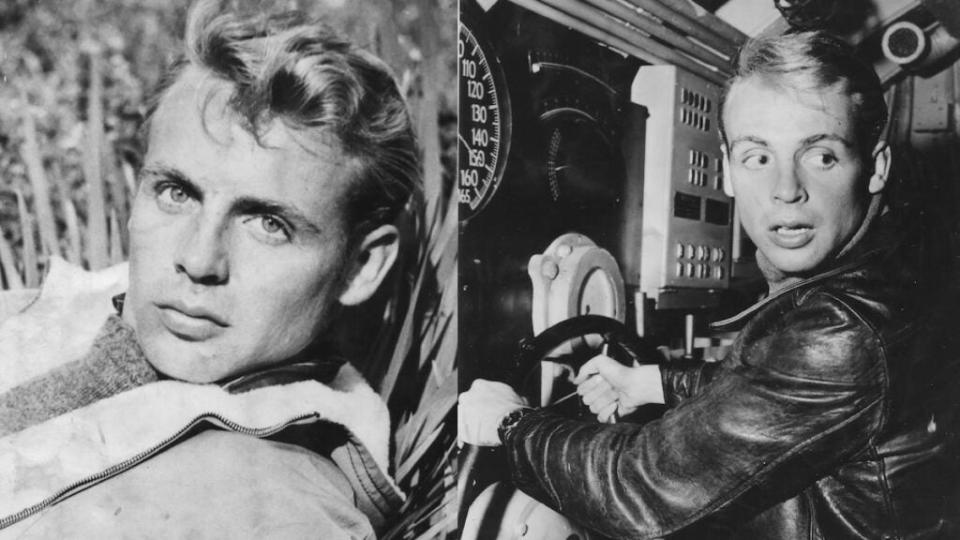
“They shot [my character] because [he] went to a gay party. Can you imagine?” she recalled drolly of her character’s fate in “Hitler.” While the penalty for being outed in Hollywood at the time wasn’t quite as severe, it would have meant the end of any actor’s career, even if it was a box office star like Hudson.
“We never even talked about these things,” she said about the need to keep a low profile. When she guest starred on an episode of “Perry Mason” in 1963, she had no idea that star Raymond Burr, who remained closeted until his death 30 years later, was also gay. Nor did she have any idea about Burr fill-in Walter Pidgeon — whom Scotty Bowers claimed was a client in his book, “Full Service: My Adventures in Hollywood and the Secret Sex Lives of the Stars.”
“Honey, I had Sal Mineo coming up to my house,” she said, showing me photos of the “Rebel Without a Cause” star, who was just a friend, at her pool and with the puppies their Weimaraner dogs had together.
Also Read:
21 Most Memorable Coming Out Stories by Hollywood Stars (Photos)
Although she loved her “movie star life” and living in the Hollywood Hills, she wasn’t happy. “I was really getting bigger in the industry. But deep inside I was very, very unhappy. I used to get these… attacks, like a panic attack,” she shared.
If she hadn’t been able to transition, “I wouldn’t be alive. I was close to suicide. It was that bad,” she stated flatly. “And nothing was important enough for me. You’re always pretending, pretending, pretending.”
When she decided 45 years ago to become the woman she always knew she was, she chose the name Marlene, after her idol, the ever-glamorous Marlene Dietrich.
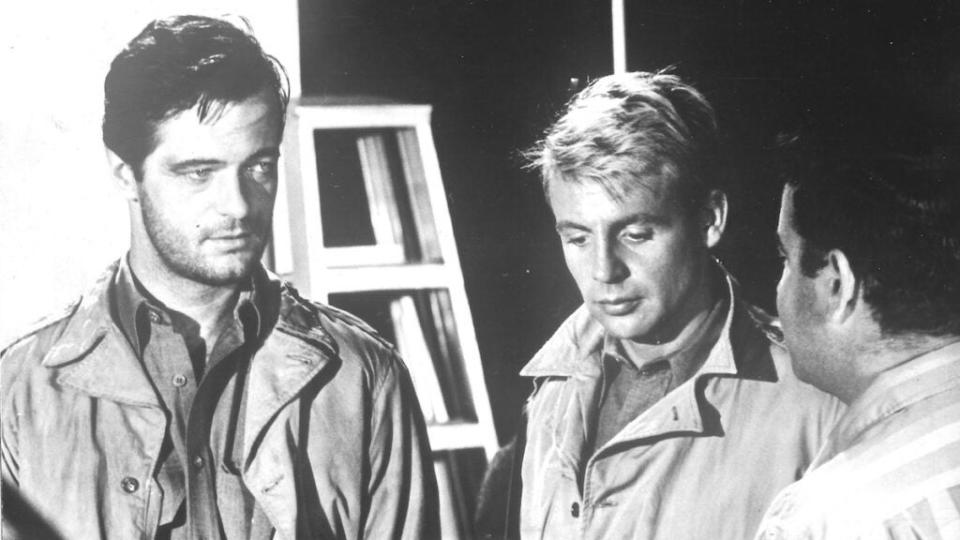
Some of her famous friends remained close, but others didn’t. “I cut John Saxon’s hair when I lived in the Hollywood Hills. Oh, he was very upset about my change,” said Marlene. “I was open to him about this whole thing. When you get into this change, you lose a lot of friends.”
Support sometimes came from surprising places. She’d already started taking female hormones and undergoing electrolysis when she got a call to be in a car commercial. “I had longer hair, but I went to this interview, butching it up, wearing leather pants and a sweater,” she recalled.
The agent told her, “They like you, but they want you to cut your hair.”
“I said, ‘Uh oh.’ My thinking was, this would be great, I can make some money to pay for my operation. I never asked anybody for money. So, I did cut my hair. But then she called me back and said they changed their mind.”
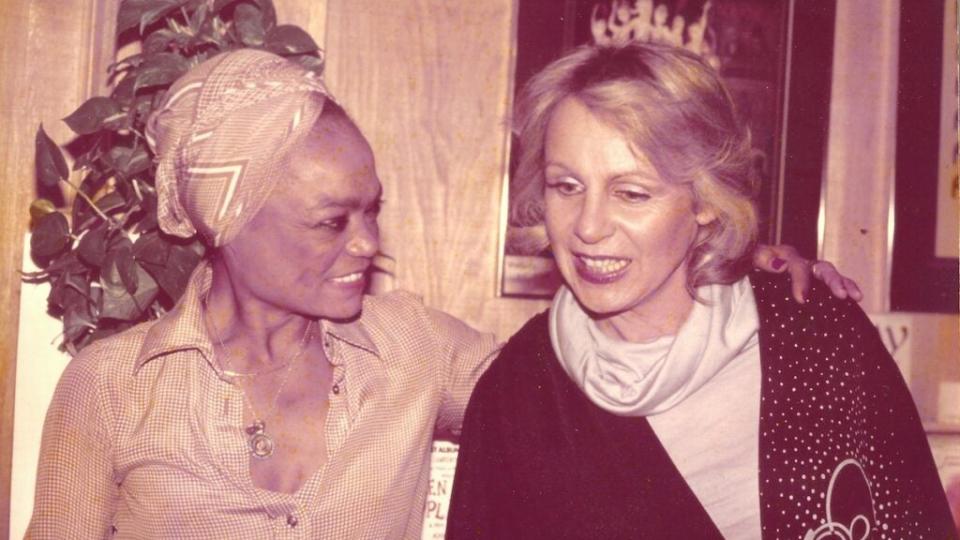
When the agent later called for another commercial, Marlene was much further along in her transition. “Needless to say, I developed more. You water the flower and the flower becomes beautiful. But I became too beautiful, you know, for the commercial,” she laughed.
“I said, ‘Well, I don’t think I can make it.’ When she asked why, I said, ‘I’m going through a very big change in my life.’ ‘What kind of change,’ she asks. ‘Well, if you really want to know it’s a sex change.’ There was quiet for a moment, then I hear. “Wow. You know what, when you get new pictures, send them to me.’ For her, it was OK. I wish it would have been true that we could have done that, but they didn’t, you know. Hollywood wasn’t ready for it.”
She’s friends with younger transgender stars like Candis Cayne — who signed her “Hi Gorgeous” memoir to Marlene, “You’re a goddess!” — but is a little wistful that it wasn’t as easy for her. “Those kids, they don’t know how lucky they are. I should have been in the business too. I know, I could have done it. I had to give that up. Yeah. I had missed a lot, unfortunately. And had to make the best of it. I had to give up practically everything.”
Also Read:
Scotty Bowers, Sex Procurer for Gay Stars in Old Hollywood, Dies at 96
Recalling Christine Jorgensen, who made a stir in the 1950s as the first trans woman to come out publicly, she wished she could have been as open. “I wish it would have happened [like] at the time when she came out. It was a sensation. But I kept everything secret.”
She still has all of Felix’s letters. “We talked about him coming to America or me going to the UK, to France.” Sadly, they lost touch over the years. “He and I met on New Year’s Eve, so every New Year’s Eve — I keep the promise and I know he does too — we toast to each other no matter where we are.” She and I both teared up over the glass of champagne we had to celebrate a few days after the photoshoot for this story.
“If I would have not gone to America, it would have been a different story. And then again, I wanted to do this. It’s not easy, you know,” she sighed. “Needless to say, I don’t think he’s here anymore.” She never told Felix about her transition, but she thinks he would have approved. “He liked women too,” she smiled.
This article is from a series of conversations, which have been edited for length and clarity.
You are reading a WrapPRO exclusive article that has been made available (for free) today. If you would like to have access to all of our member-only stories and virtual events, please CLICK HERE to receive 7 free days of WrapPRO –> The Essential Source for Entertainment Insiders.
Also Read:
Trans Pioneer Marlene Parker Portraits (Exclusive Photos)
